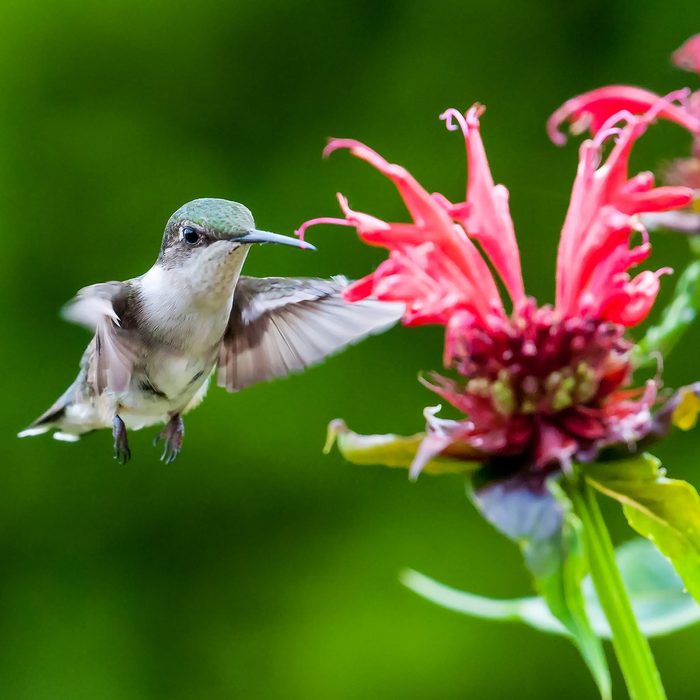
Bee Balm
Best in USDA Hardiness Zones 3 to 9
This plant fits the bill. It’s vibrant, tube-shaped and full of nectar—everything a hummingbird wants. Plant bee balm in full sun and in well-draining soil. Then sit back and enjoy the fragrant flowers and the hummingbird show.
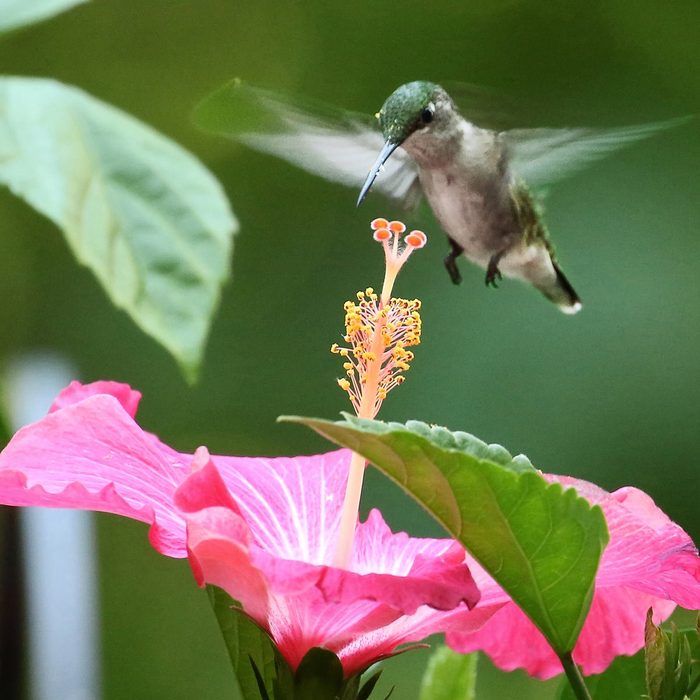
Hibiscus
Best in USDA Hardiness Zones 4 to 9
This hardy favorite features flowers that span from four to 12 inches wide. It’s a heat lover, so find a sunny spot and get ready to watch tiny birds visit the gigantic blooms.
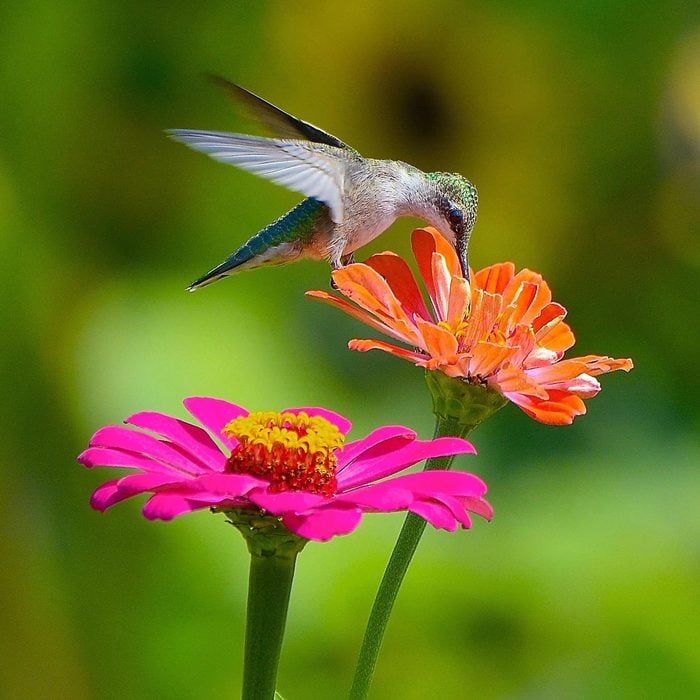
Zinnia
Works in all USDA Hardiness Zones
For a quick pop of color in the summer garden, sun-loving zinnias are a must. Plant a combination of single-bloom varieties in red and bright pink to make the yard more desirable to hummingbirds. By the way, here are the mistakes you might be making with hummingbird nectar.
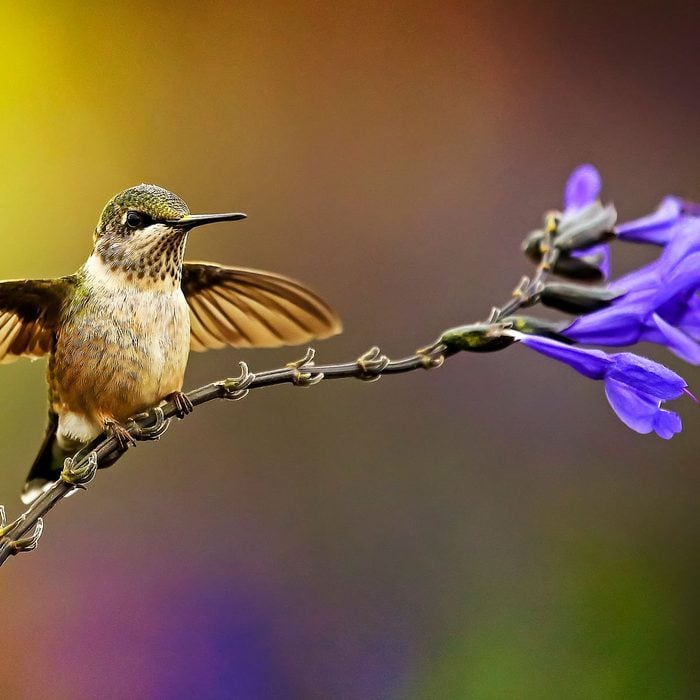
Salvia
Best in USDA Hardiness Zones 4 to 11
Salvia is a hummingbird favorite because many other nectar seekers, like bees and butterflies, can’t access the nectar buried deep in the tubular blooms. That means more for hummingbirds!
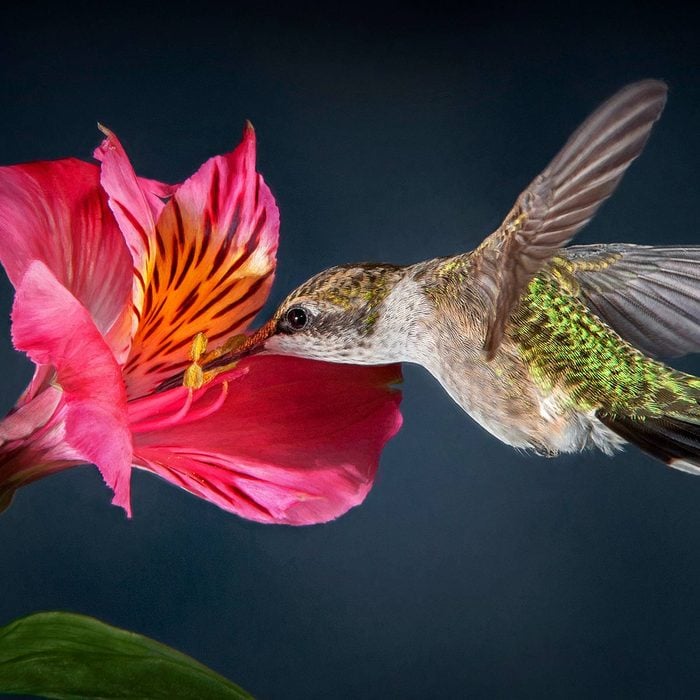
Alstroemeria
Best in USDA Hardiness Zones 5 to 10
The vibrant, exotic look of this bulb is super attractive to hummingbirds. It’s also a favorite of gardeners in the West. Have hummingbird feeder questions? Check out our expert answers.
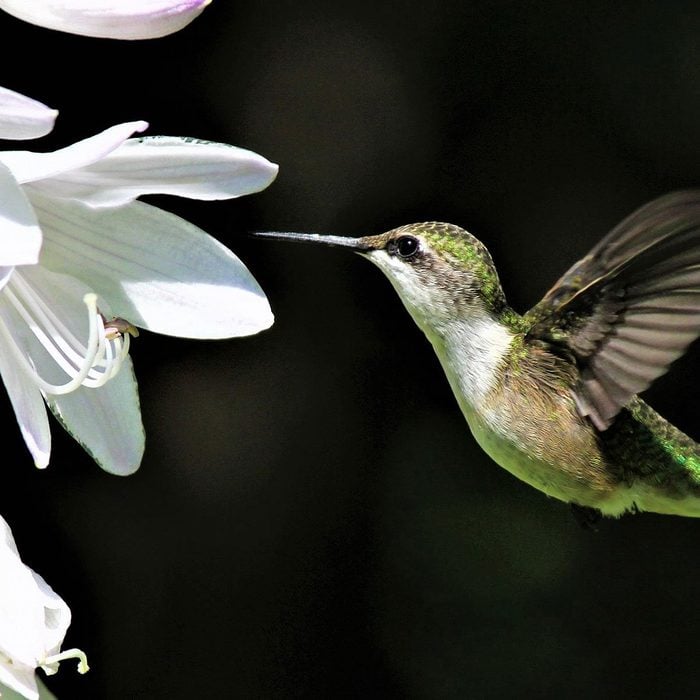
Hosta
Best in USDA Hardiness Zones 3 to 8
Rising up to three feet above the foliage, hosta flowers are nectar-filled and dainty. The blooms last up to six weeks, so they are always at the ready when a hummingbird stops by. Learn how to grow and care for hostas.
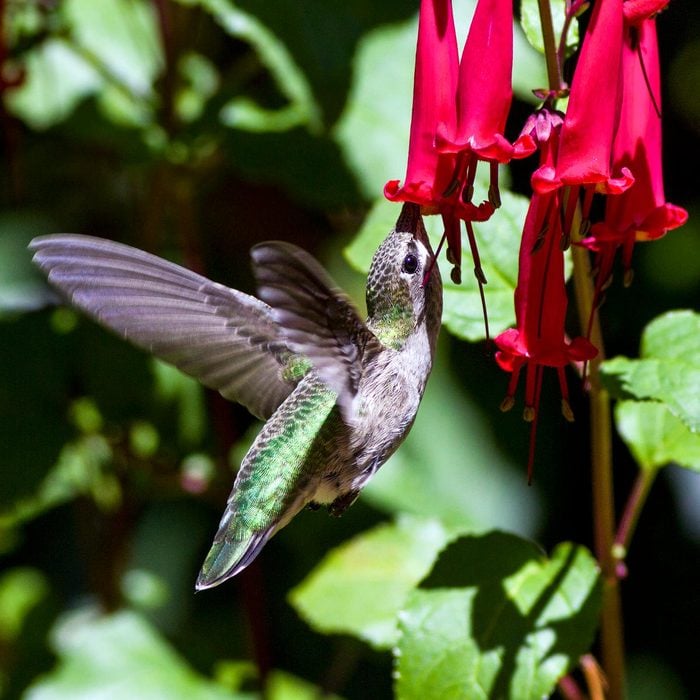
Cape Fuchsia
Best in USDA Hardiness Zones 6 to 10
At three to five feet tall and wide, cape fuchsia commands attention in any garden, especially when the bright tube-shaped flowers are in bloom. A hummingbird’s slender bill is a perfect fit!
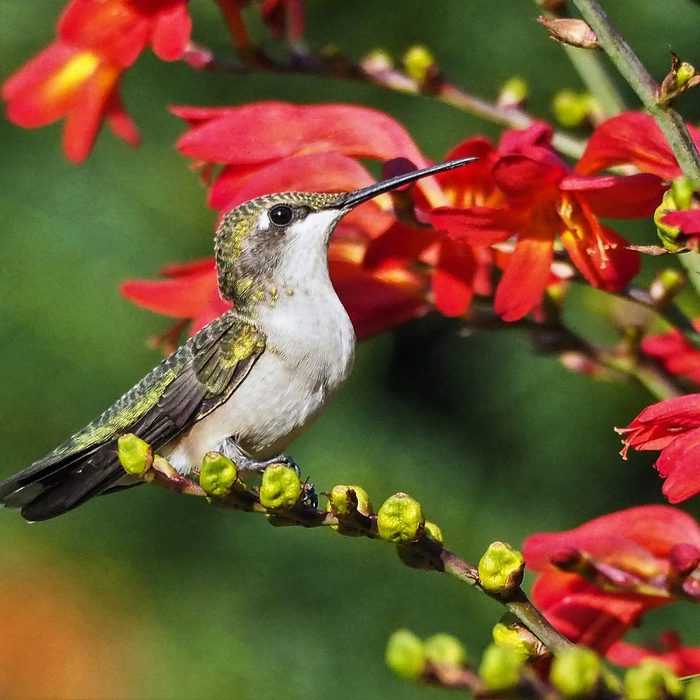
Crocosmia
Best in USDA Hardiness Zones 5 to 9
Fiery red-orange blossoms burst to life in mid- to late summer, offering your resident hummingbirds a sweet treat. For the best flowers, make sure to keep the soil moist. Want even more birds in your backyard? Put out these foods you likely already have in your kitchen.